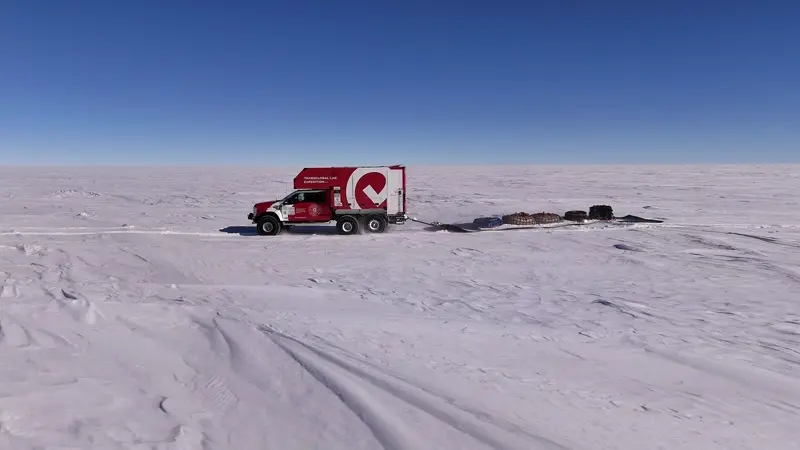As a former rally and Ford Performance driver, Andrew Comrie-Picard has a long history of pushing Ford vehicles to their limit, though none as bone-chilling as his most recent conquest.


“We’re testing ourselves and our vehicles to the max out here,” Comrie-Picard said by email from Antarctica, where he and a team of seven explorers recently embarked on a nearly 3,000-mile trek to cross the entire continent to the South Pole, through the snowy minus-40-degrees Fahrenheit conditions.
As the science officer of the Transglobal Car Expedition, Comrie-Picard shared that his team was performing continuous ice thickness surveys of the polar ice cap, collecting data on cosmic ray penetration of the atmosphere, and sampling light pollution and the physical effects of extreme weather conditions on humans.
Many scientists from around the world are working with the team, including those from CERN Switzerland, the European Organization for Nuclear Research.
“I wanted to do it in Ford vehicles.”Andrew Comrie-Picard

“Part of the challenge of crossing the massive continent of Antarctica, about 50% larger than the USA, is you have to take everything in and out with you, including your fuel,” said Comrie-Picard in a January 2025 diary entry.
He knew that to pull off this expedition, the team needed to haul 5,000 to 8,000 pounds of supplies on sleds across the ice. And he knew just the vehicles to get the job done.
“We wanted to do it in Ford vehicles," he said in an email. "The aluminum bodies help us with the low center of gravity mixed with good interior space and the toughness we need … and we all love the torque."
An exploration of this magnitude isn’t planned in a day, not even in a few months. The team studied the terrain over five years and tested their four heavily modified Super Duty trucks — optimized for the grueling environment by Arctic Trucks — on several pre-expeditions in the Arctic. They developed a route from the continental shelf of North America to the Arctic Ocean.
“We're testing ourselves and our vehicles to the max out here.”Andrew Comrie-Picard
“Data on cosmic rays has never been collected north of the 82nd latitude, and there’s never been a continuous ice thickness ground survey across the Arctic," Comrie-Picard said. "We were able to do both.”
Even with years of preparation, scoping the terrain in Antarctica and testing in real-world conditions, there are always unexpected challenges along the way that require expert problem-solving. Setbacks like repairing tires or other components on the vehicle can put the entire journey at risk.
Around New Year's Eve and halfway into the team’s Antarctic journey, they experienced one of those challenges.
Ford engineers came across a news article written based on an Instagram post from Transglobal Car Expedition indicating the team needed help.
Seven hundred miles from the nearest person and a continent away from a Ford dealership, the team hoped someone could urgently offer support as they tried to troubleshoot in the frigid conditions. Ford engineers reached out from all the way across the world via email, with both sides staying connected thanks to the expedition’s Starlink.
At one point, after successfully addressing the issue, Comrie-Picard suddenly went offline.
“Sorry that I was offline for a couple of days," he finally responded a few days later. "We can't use Starlink near the South Pole so as not to interfere with the radio telescope station there.”
Thus the team had arrived at one end of the earth.
As for how Comrie-Picard went from racing to circumnavigating the globe?
“Around the time I was racing with Ford Performance (2014), I started thinking about what the most difficult thing anyone could do with a vehicle would be," he said.
Transglobal Car Expedition will complete its 31,000-plus mile mission this spring. Follow the last leg of its journey on the TGC website or @transglobalcar on Instagram.
Maria Buczkowski is a Ford Communications team member.





